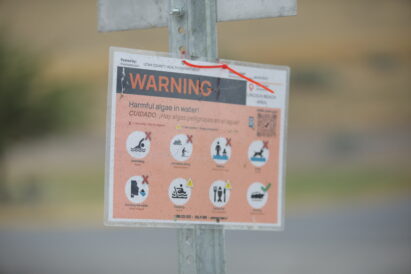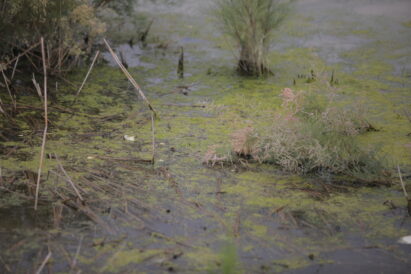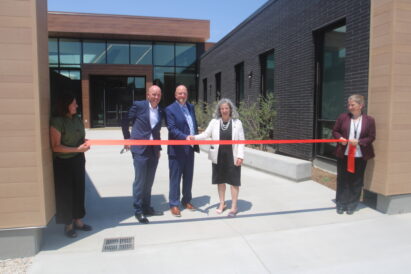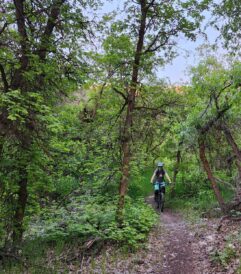Harmful algal blooms discovered at Utah Lake’s Lincoln Beach and Provo Bay
- A sign warning people about harmful algae hangs just off the shore of Utah Lake’s Lincoln Beach Park in Spanish Fork on Tuesday, July 18, 2023.
- Algae sits on Utah Lake at Lincoln Beach Park in Spanish Fork on Tuesday, July 18, 2023.
- Utah Lake is shown from Lincoln Beach Park in Spanish Fork on Tuesday, July 18, 2023.
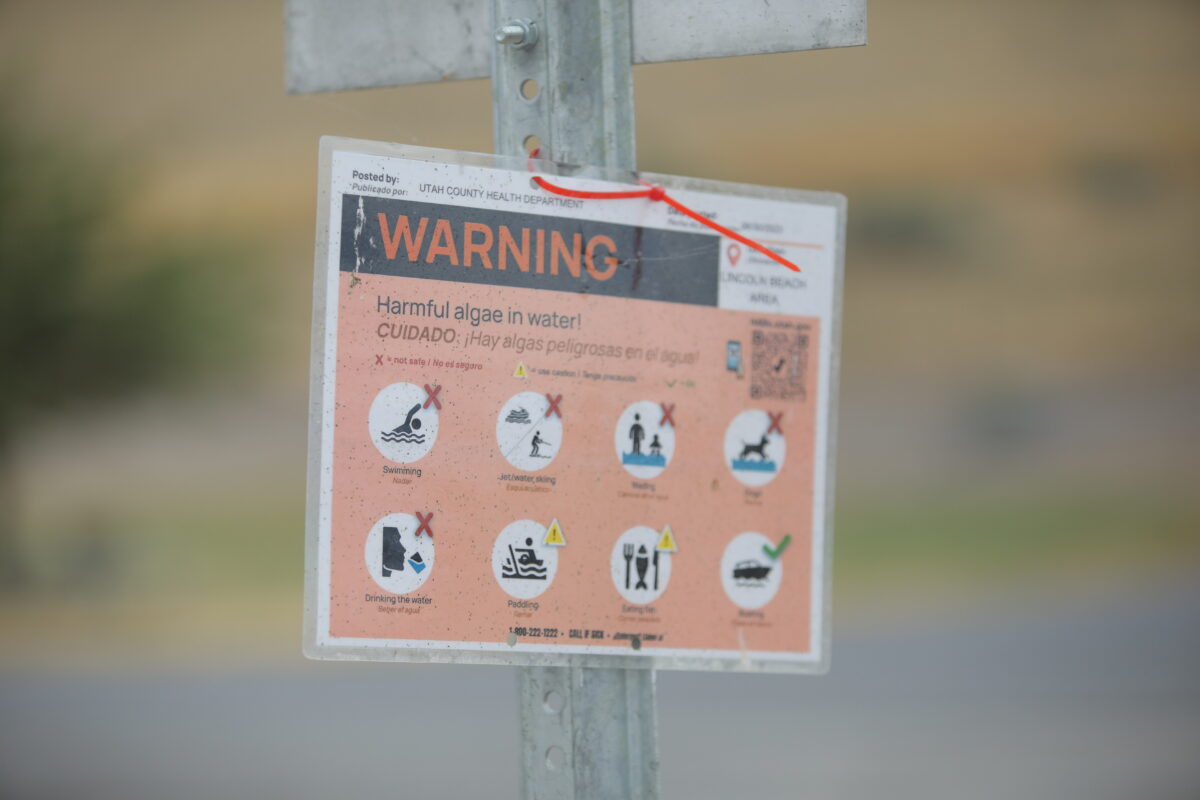
Harrison Epstein, Daily Herald
A sign warning people about harmful algae hangs just off the shore of Utah Lake's Lincoln Beach Park in Spanish Fork on Tuesday, July 18, 2023.
Utah Lake’s Lincoln Beach, in Spanish Fork, and Provo Bay are under a warning advisory due to the presence of harmful algal blooms in the water. While the advisory is in place, people are asked to not swim in the water and be cautious when boating that the boat does not cut through algae on the surface.
Hannah Bonner, recreational health advisory program coordinator for the Utah Department of Environmental Quality, said anyone catching fish should make sure to clean the fish well and discard any skin and guts before eating.
As of the last monitoring update, on July 13, no other areas of Utah Lake showed any visible signs of a harmful algal blooms. Lincoln Beach has been under a warning advisory since June 29 and Provo Bay has had an advisory since July 3.
“Our recommendation is always just that people know what to look for. They can look on our website to see photos. And just before you hop in, look around and make sure it looks good. And if water conditions look good in those more northern areas, then swimming is okay,” Bonner said.
Visual indications of the algae are present and should be able to be seen on the surface and in the water. There are a variety of appearances, but people going on the lake should be aware of the differences.
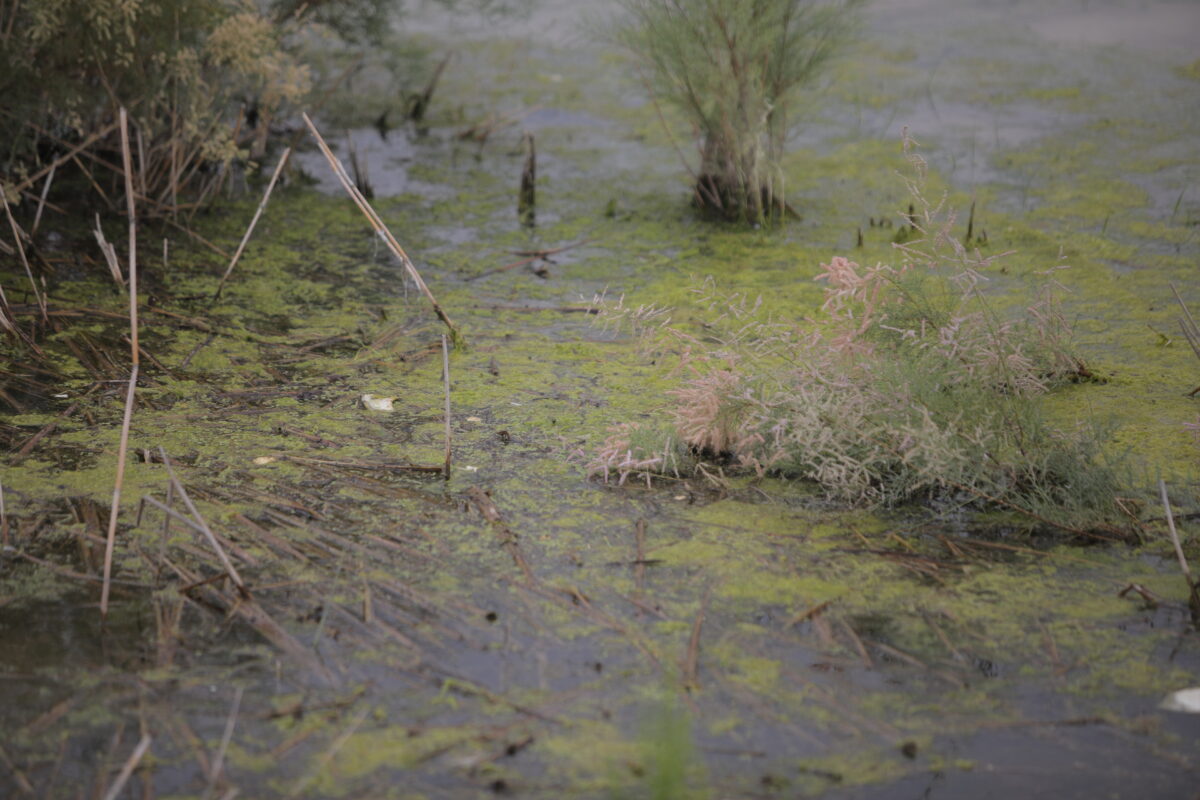
Harrison Epstein, Daily Herald
Algae sits on Utah Lake at Lincoln Beach Park in Spanish Fork on Tuesday, July 18, 2023.
“If it’s really dense, you can see things like scum or almost a cottage cheese-like texture. Or you can also see it in the water column itself. Anything from grass clippings to it looks like there are little globs in the water or maybe someone even poured a can of paint,” Bonner said.
Under these conditions, people who want to recreate on the lake need to avoid swimming, water skiing, and “anything that could allow that material to get into their body.” Whether there is a harmful algal bloom or not, Bonner stressed to “never drink the water.”
When the DEQ monitoring team was last on the open water, they did not see visible algae until they were a bit south of Utah State Park. However, it is difficult for experts to draw distance boundaries for where it is safe to swim and recreate because algae can move and float.
When contact is made with algae, skin irritation can occur, possibly making a person or animal sick if ingested. According to the DEQ website, toxins produced by these algal blooms “can damage the human kidney, liver, or neurological system.” Pets and livestock are more likely to be affected as they are more likely to drink the water.
Bonner said it is a common occurrence on Utah Lake to have algal blooms appear and for them to start on the southern side of the lake because it is more shallow and warms up faster.

Harrison Epstein, Daily Herald file photo
Utah Lake is shown from Lincoln Beach Park in Spanish Fork on Tuesday, July 18, 2023.
“These algae species naturally occur in every water body in the world. So there’s always some level present. If you’re not seeing it bloom, they’re present at a really healthy level, but then if conditions become right to facilitate growth, that’s when a bloom forms,” Bonner said.
The two factors that control an algal bloom are the water conditions and nutrient pollution. The combination of large amounts of sunlight for photosynthesis and high temperatures make the perfect conditions for a bloom to occur.
The other factor needed for a bloom to occur can be controlled by residents of Utah Valley — the food algae receives. The algae feeds off nitrogen and phosphorus, which is generally put into a body of water by human activity, Bonner added.
“Probably nothing we do right now is going to stop what this summer plays out like, but the silver lining of nutrient pollution being a controlling factor of blooms is that humans can do something about it in the longer term,” she said.
Human sources of nutrient pollution include wastewater and agriculture runoff from farms. Individual human contributions to the pollution can come from fertilizer, products with phosphorus and waste, whether it is human, plant or animal.
Since the algae is already present in the water, Bonner said a bloom can generate on its own in other parts of the lake, but present blooms can spread by water flow and wind. She assured boaters who are recreating on the lake that the water disturbance caused by the boat will not spread the algae to other parts of the lake, so they will not worsen the problem.
“Boaters can have peace in that,” Bonner said. She did, however, add that if a boat floats through a dense layer of algae on the water surface it can throw the toxins and the algae into the air which could be a human health risk.
Although DEQ cannot predict what will happen, Bonner said it is likely that other parts of the lake will experience a bloom as the summer continues.

